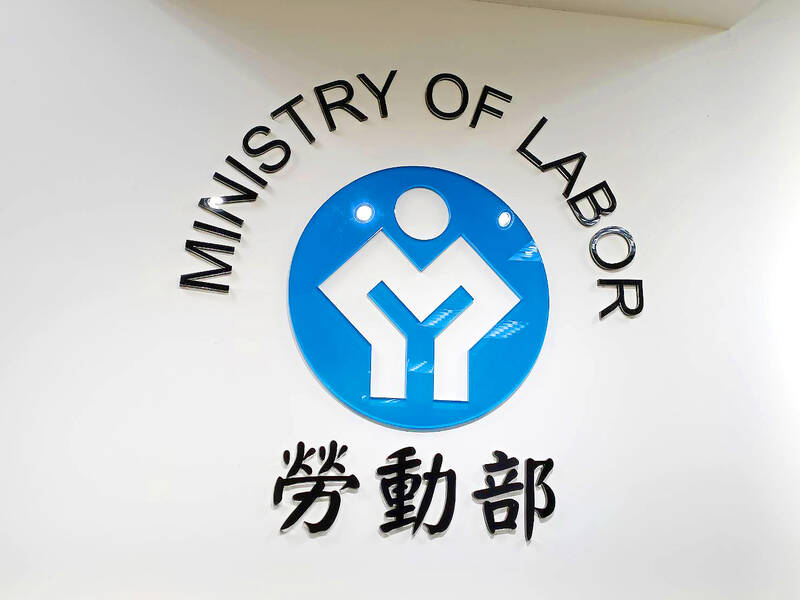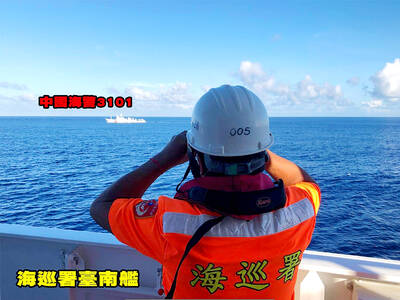A recent rumor claiming that the Taiwanese government is to introduce as many as 100,000 migrant workers from India is part of China’s cognitive warfare, a national security source said on Saturday.
The disinformation, which emerged shortly after Taipei confirmed on Nov. 13 that it is to sign a memorandum of understanding (MOU) with New Delhi before the end of this year on the hiring of Indian migrant workers to Taiwan to help with the labor shortage, is a tactic being employed by Beijing to create social panic and spark tension between Taiwan and India, the source said.
China seems to have spammed the Facebook page of Taiwan’s Ministry of Labor with “modularized messages,” which either demand the ministry make public details of the MOU or reject Indian migrant workers, the source said, adding that at least 2,000 out of 3,600 accounts have met that pattern.

Photo: Lee Chin-hui, Taipei Times
The majority of those accounts are “abnormal” as they show limited information about personal activities and social networking traces, the source said, meaning it is possible they were created to manipulate public opinion regarding the issue.
While Minister of Labor Hsu Ming-chun (許銘春) has openly denied the 100,000 Indian migrant worker influx, the matter has raised the attention of Taiwan’s National Security Council, which is also seeking the intervention of the Ministry of Foreign Affairs, the source said.
This is because the disinformation involves discrimination and could hurt Taiwan-India relations, the source said, adding that it is in the process of developing more effective countermeasures.
However, the MOU issue has drawn heated debate online in Taiwan, and a rally is planned for Saturday against the government’s move.
According to a newly established Instagram group, which is organizing the demonstration, Taiwan does not need to introduce yet another new source of migrant workers.
The move would lead to “stagnant wages forever,” the group said, also raising concerns about women’s safety due to “significant differences” in gender perspectives between India and Taiwan.
It was not good enough for the government to respond to its concerns by only saying “no discrimination,” while providing neither explanations nor supporting measures, the group said.
Meanwhile, the Taiwan International Workers Association (TIWA) said it is not against migrant workers, adding that the key is to practice “equal pay and equal rights for equal work.”
Failure to do so might lower overall labor conditions in Taiwan, which is detrimental for every worker regardless of nationality, the TIWA said.
A local India research association also issued a statement saying it welcomes Taiwan opening its doors to Indian migrant workers, but called for more effort from the government to break stereotypes about India.
Nevertheless, the government still needs to review and improve the structural issues causing low wages in Taiwan as it opens up to migrant workers, the association said.
Bilateral trade between Taiwan and India has risen more than seven-fold from US$1.19 billion in 2001 to US$8.4 billion last year — the highest ever — with New Delhi being Taipei’s 14th largest buyer of goods and its 18th largest supplier, government statistics showed.
According to Ministry of Labor data, there were approximately 750,000 migrant workers in Taiwan as of the end of September, with the majority coming from Indonesia (267,194), ahead of Vietnam (261,301) and the Philippines (152,026).

The Coast Guard Administration (CGA) yesterday said it had deployed patrol vessels to expel a China Coast Guard ship and a Chinese fishing boat near Pratas Island (Dongsha Island, 東沙群島) in the South China Sea. The China Coast Guard vessel was 28 nautical miles (52km) northeast of Pratas at 6:15am on Thursday, approaching the island’s restricted waters, which extend 24 nautical miles from its shoreline, the CGA’s Dongsha-Nansha Branch said in a statement. The Tainan, a 2,000-tonne cutter, was deployed by the CGA to shadow the Chinese ship, which left the area at 2:39pm on Friday, the statement said. At 6:31pm on Friday,

The Chinese People’s Liberation Army Navy’s (PLAN) third aircraft carrier, the Fujian, would pose a steep challenge to Taiwan’s ability to defend itself against a full-scale invasion, a defense expert said yesterday. Institute of National Defense and Security Research analyst Chieh Chung (揭仲) made the comment hours after the PLAN confirmed the carrier recently passed through the Taiwan Strait to conduct “scientific research tests and training missions” in the South China Sea. China has two carriers in operation — the Liaoning and the Shandong — with the Fujian undergoing sea trials. Although the PLAN needs time to train the Fujian’s air wing and

STRIKE: Some travel agencies in Taiwan said that they were aware of the situation in South Korea, and that group tours to the country were proceeding as planned A planned strike by airport personnel in South Korea has not affected group tours to the country from Taiwan, travel agencies said yesterday. They added that they were closely monitoring the situation. Personnel at 15 airports, including Seoul’s Incheon and Gimpo airports, are to go on strike. They announced at a news conference on Tuesday that the strike would begin on Friday next week and continue until the Mid-Autumn Festival next month. Some travel agencies in Taiwan, including Cola Tour, Lion Travel, SET Tour and ezTravel, said that they were aware of the situation in South Korea, and that group

Taiwanese celebrities Hank Chen (陳漢典) and Lulu Huang (黃路梓茵) announced yesterday that they are planning to marry. Huang announced and posted photos of their engagement to her social media pages yesterday morning, joking that the pair were not just doing marketing for a new show, but “really getting married.” “We’ve decided to spend all of our future happy and hilarious moments together,” she wrote. The announcement, which was later confirmed by the talent agency they share, appeared to come as a surprise even to those around them, with veteran TV host Jacky Wu (吳宗憲) saying he was “totally taken aback” by the news. Huang,